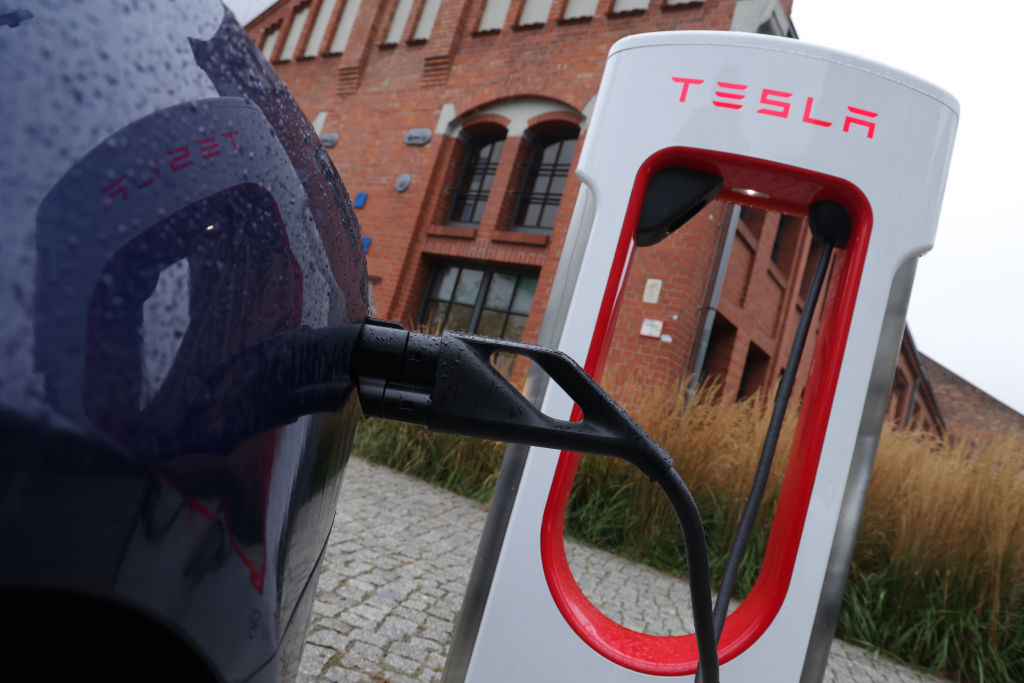
(To get this story in your inbox, subscribe to the TIME CO2 Leadership Report newsletter here.)
Tesla’s dominance not just of the electric vehicle market but also for anything and everything EV-related seems to be growing yet again. Last week, GM announced that users of its EVs would, by next year, be able utilize Tesla chargers. Ford had made a similar announcement just a few weeks prior.
Tesla’s creation of a vast new EV charging business was, apparently, an accident. The debate over how to build charging infrastructure has raged since the early days of electric vehicles. Will people just charge up at home? How much are consumers willing to pay to recharge? Should governments build and operate a charging network? Amid this debate, Tesla went ahead and built its own network, not to turn charging into a profit center but rather to reassure buyers that they could get across the country without running out of power.
Nevertheless, charging could become a significant source of revenue for the company. A recent analysis from investment bank Piper Sandler & Co. found that a decade from now, Tesla’s opening up of its charging network to other car manufacturers could generate the company upwards of $5 billion in revenue annually. “This is a bit of an AWS moment for Tesla,” Jonathan McNeill, a former Tesla executive who now sits on GM’s board, told Bloomberg Technology. McNeill is referring to Amazon Web Services, Amazon’s cloud computing business, which began as way to reduce costs and has since become a key source of revenue. Tesla, McNeill says, is “taking something that’s been a cost burden for them and turning it into a revenue source.”
Read more: Why the Staff of Europe’s Most Valuable Company Is Getting ‘Climate Training’
Conversations about the energy transition often focus on the creation of new technologies: what’s the new energy source, hardware, or algorithm that can cut emissions? But the EV charging space is a reminder that business-model innovation can be just as important—if not more important—than the technology itself. We have many if not most of the technologies we need to tackle climate change; the next step is to figure out how to make money off of the solutions.
None of the companies exploring different business models in the EV charging space have proven it can be profitable. Blink Charging, EVGo, and ChargePoint have all built some combination of a charging network for consumers and businesses, with other revenue streams like fleet charging and bespoke charging for office parks. “We’re making money on equipment, services, and software subscriptions,” ChargePoint CEO Pasquale Romano told me. Any, or all, of those models could eventually be successful, but the markets remain skeptical. Shares in all three companies’ stock are down at least 80% from highs over the last few years even as investment in electric vehicles surges. And it almost entirely comes down to business model.
Read more: IEA Head Fatih Birol Wants The Fossil Fuel Industry To Set Climate Targets
Identifying a workable business model is Business 101. That might be why such innovation often receives less attention than technology—not only in the public conversation but also in some corporate headquarters. Compelling innovations like crazy ways to capture solar electricity, for example, are much more likely to win public attention than, say, wonky new tax rules that create new business cases for deploying solar electricity.
Even in corporate headquarters, business model innovation can take a back seat. A 2022 report by Boston Consulting Group found that companies targeting sustainability are much more likely to be focused on technology and product innovation than on business model innovation. There’s an obvious case for a greater focus on the latter. For one, it would help get clean energy technologies off the ground faster. It would also create new opportunities to build new sources of revenue for incumbent companies.
More Must-Reads From TIME
- The 100 Most Influential People of 2024
- Coco Gauff Is Playing for Herself Now
- Scenes From Pro-Palestinian Encampments Across U.S. Universities
- 6 Compliments That Land Every Time
- If You're Dating Right Now , You're Brave: Column
- The AI That Could Heal a Divided Internet
- Fallout Is a Brilliant Model for the Future of Video Game Adaptations
- Want Weekly Recs on What to Watch, Read, and More? Sign Up for Worth Your Time
Write to Justin Worland at justin.worland@time.com